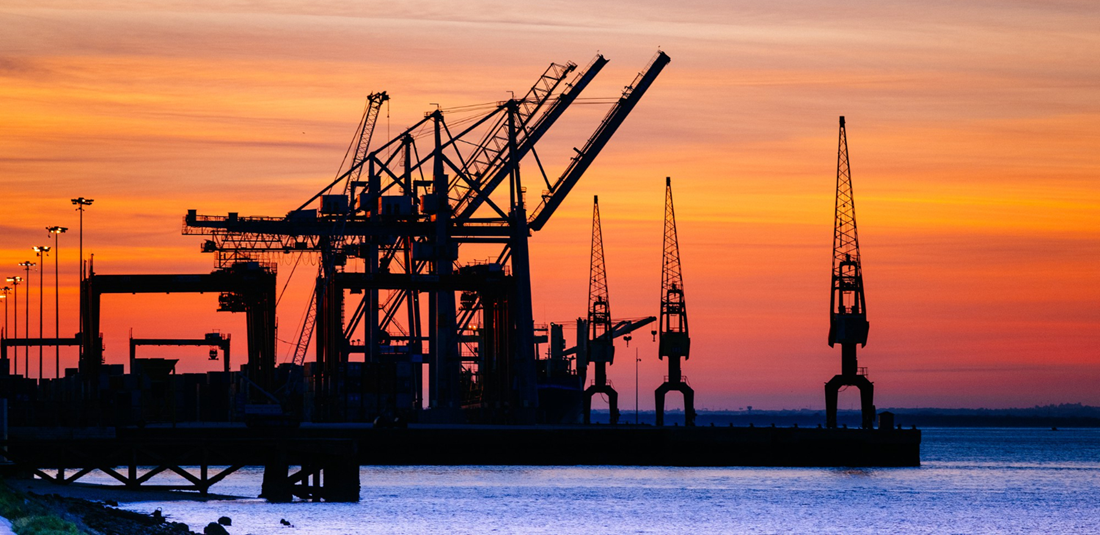
Oil set to top Brazilian exports in 2024
May, 10, 2024 Posted by Sylvia SchandertWeek 202419
Oil is gaining increasing prominence and is expected to emerge as Brazil’s primary export this year. The shift comes as the extractive industry now constitutes a quarter of the country’s total exports. Oil’s performance helped drive record shipment revenue for the January-April period. The difference between oil and soybeans, which topped the ranking in the period, is just $300 million. Higher volumes continue to compensate for falling prices, a pattern similar to that of total imports.
According to data released on Wednesday by the Secretariat of Foreign Trade (SECEX/MDIC), the trade balance for April registered a surplus of $9.04 billion. Year-to-date, the surplus reached $27.74 billion. Exports totaled $108.9 billion, an increase of 5.7%. Imports grew 2.2% and reached $81.1 billion.
The extractive industry’s share in total Brazilian exports increased to 25.8% in the January-April period, compared with 21.7% in the same period last year, driven by crude oil and iron ore.
Both commodities had an increase in export revenue at a level above the average for total shipments. The value of oil and iron ore shipped grew, respectively, 29.3% and 24.8% year over year in the January-April period. In the same period, the country’s total exports increased by 5.7%.
Herlon Brandão, director of statistics and foreign trade studies at the Ministry of Development, Industry, and Foreign Trade (MDIC), stated that “oil has been the highlight” of exports in the first four months of this year.
José Augusto de Castro, president of the Brazilian Foreign Trade Association (AEB), says that oil is on track to be the main product in Brazilian exports in 2024. SECEX data also shows that, despite the 3% drop in prices, the increase in oil revenue was guaranteed by shipment volume, which grew 33.4% in the January-April period compared with the same period last year.
“Maintaining the current pace, even if there is no price increase, oil will become the main product exported by Brazil in 2024,” said Mr. Castro. Soybean currently tops the ranking, but grain exports are seasonal and should fall from September onwards, he said. Furthermore, he recalled that shipments are being brought forward. Although Brazil has exported significant volumes of soybean as a result, this year’s grain harvest will not be as large as last year’s.
In the aggregate of exports, the good performance of volumes, which grew 10.6% in the January-April period, continues to offset prices, which fell 4.2% compared with the same months of 2023. Imports saw a similar dynamic, with a 12.6% increase in quantity and a 9.9% drop in prices.
Lucas Barbosa, an economist at AZ Quest, said that the dynamics of the balance remain “robust,” with exports of $345 billion in the past 12 months. Imports, which had been declining, seem to have stabilized at around $240 billion over 12 months, with more heterogeneous dynamics between sectors and signs of potential acceleration, said Mr. Barbosa. This is already evident in industrial items and capital goods, which may reflect government policies aimed at modernizing the industrial park and is consistent with the outlook for more widespread economic growth in 2024, the economist added.
According to data from SECEX, considering imports by economic categories, the increase in the volume of foreign purchases was driven by capital goods, with an increase of 19.6%, and consumer goods, which grew by 20.4%.
As for bilateral relations, trade with Argentina draws attention. Following a surplus of just $75.5 million in the first quarter, Brazil’s trade balance with Argentina now exhibits a deficit of $40.3 million for the year up to April.
The result is not surprising, said Mr. Castro of AEB. “Argentina is reducing imports in search of a better trade balance, not only due to the lack of hard currency but also to try and improve conditions in the external sector. And this approach is affecting Brazilian exports.” SECEX data shows that there was a 29.9% drop in the value shipped by Brazil to Argentina in the January-April period compared to 2023, while imports grew 2.9%.
Asked about the effects on the trade balance of the environmental disaster in Rio Grande do Sul, Mr. Brandão said that the state is Brazil’s sixth-largest exporter and sixth-largest importer. Among the state’s most relevant items are soybeans, tobacco, and beef, as well as industrialized products, such as shoes, plastic polymers, and agricultural machinery. The impact of the floods on soybean sales is “still uncertain,” he said.
Source: Valor Internacional
-
Ports and Terminals
Mar, 24, 2022
0
The dredging contract of the Port of Cabedelo will be signed next Tuesday
-
Grains
Dec, 20, 2021
0
Chinese imports of US soy have increased from October to November
-
Grains
Feb, 21, 2022
0
Australia is wheat’s safe haven amid tensions in Eastern Europe
-
Blog News (ENG)
Aug, 20, 2024
0
Brazil watch fruit exports drop 7.62% in 1H 2024



